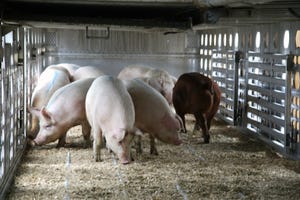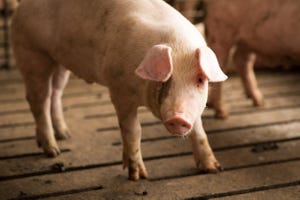New Computer Program Adds Precision to Nitrogen Applications
Nutrient management in corn can be a relatively simple process when conditions are ideal. It’s when Mother Nature dishes out too much or too little rainfall, or temperatures that are too cool or too warm that manure or commercial nitrogen (N) application gets dicey.
May 12, 2010

Nutrient management in corn can be a relatively simple process when conditions are ideal. It’s when Mother Nature dishes out too much or too little rainfall, or temperatures that are too cool or too warm that manure or commercial nitrogen (N) application gets dicey.
Soil scientists in the Northeast, which has had its share of difficult weather conditions in recent years, have put together a new computer modeling program aimed at helping farmers get a better handle on when to apply more nitrogen to corn ground.
Called ADAPT-N, the computer program developed by researchers at Cornell University is designed to remove some of the guesswork from nutrient management and replace it with information that enables producers to more precisely predict corn nitrogen needs. They discussed the tool at the recent Iowa On-Farm Network Conference in Ames, IA.
“In New York, dairy is the primary agricultural industry. About half of the corn production is for silage, and most of that receives manure,” said Jeff Melkonian, senior extension associate in Crop and Soil Sciences at Cornell. “It is as important an issue in New York as it is in Iowa, where I think 20% of the corn receives swine manure. Weather, especially rainfall, is a key factor affecting the availability of applied nitrogen fertilizer and manure nitrogen.”
The Adapt-N program combines model simulations with high-resolution climate data, Melkonian says. The National Oceanic and Atmospheric Administration’s Northeast Regional Climate Center has been a major contributor to the project.
Spring temperatures and soil moisture conditions can have a major impact on soil nitrogen as shown in pre-sidedress nitrogen testing (PSNT) conducted by Cornell researchers. In years with warm temperatures and wet conditions, soils typically have intermediate to low PSNTs, he notes. “The management implications for fields with high organic N levels – that is, manured fields or fields with a forage crop in previous years – is that fields with intermediate to low pre-sidedress nitrogen tests may require additional nitrogen when temperatures are warm and conditions are wet,” he said.
Besides climate data, growers can input soil test data, soil types, cultivars, drainage, tillage, expected yields and previous nutrient applications. The program allows growers to enter fertilizer application information for the last three years to help determine how much nitrogen is available in their soils.
Iowa farmers attending the conference have more than a passing interest in the computer modeling program. The Cornell researchers and On-Farm Network participants plan to expand it to the Midwest this spring. “We’re collaborating with some independent consultants here in Iowa, as well as the Iowa Soybean Association, to use some of their data and to test our model,” said Harold van Es, professor of soil and water management at Cornell. “We’re also planning to put out some field plots, some strip trials and demonstrations to test the model in Iowa.”
Van Es said researchers will have to make some adjustments to the model because conditions are different in Iowa than they are in New York. “But we’re very confident that it will work. We will have high-resolution climate data that we use as inputs for the model in this region. We want to use that data and basically do a lot of testing, and we hope that will be successful,” he adds.
For more information on Melkonian’s presentation, go to www.isafarmnet.com/.
You May Also Like



